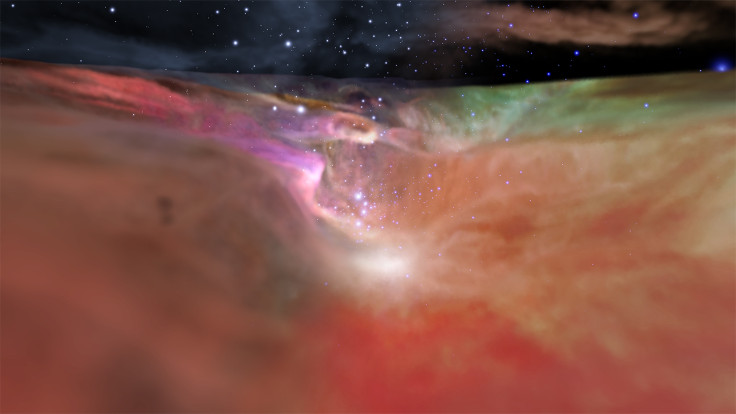Orion Nebula in 3D: Stunning Nasa video captures baby stars, glowing cosmic clouds like never before
The video lets us dive deep into the nebula, which is located some 1,350 light years away from Earth.

After capturing some enthralling cosmic shots, Nasa is using its creativity to simulate a quick trip to one of Milky Way's most scenic creations, the Orion Nebula.
Located some 1,350 light years away, the Orion Nebula is a dense star-forming region hosting some of the youngest stars of the universe surrounded by massive glowing clouds of gas and dust. The stellar nursery is visible from Earth as a tiny "star" in the sword of the constellation Orion, the Hunter, but now, Nasa is giving us a chance to see its complex and dynamic features and that too in 3D.
On Thursday (11 January 2018), the space agency's Universe of Learning programme released a three-dimensional visualisation that not only showcases the distant nebula unprecedented detail but also lets viewers dive into it – "up close and personal".
The three-minute-long video is an immersive fly-through simulation that highlights the topography of one of the brightest nebulas in the sky.
The experience of the whole thing is akin to flying a spaceship around baby stars and clouds of gas and dust heated by their intense radiation.
Created using actual imagery from the Spitzer and Hubble Space Telescope, the clip brings out different infrared and views of the Orion Nebula. It starts off with a wide view of the cosmos and then zooms in on the distant region, taking viewers deep into its coloured world.
Nasa astronomers and visualisation specialists developed the video after combining the telescopic data with sophisticated techniques used in Hollywood, according to a Nasa release.
"Being able to fly through the nebula's tapestry in three dimensions gives people a much better sense of what the universe is really like," says visualisation scientist Frank Summers, who led the team that developed the movie.
"By adding depth and structure to the amazing images, this fly-through helps elucidate the universe for the public, both educating and inspiring". The 3D video will also be made available to planetariums and learning centres around the world.





